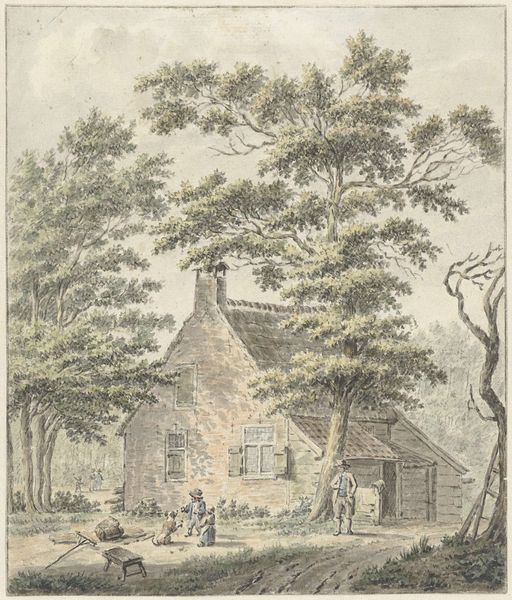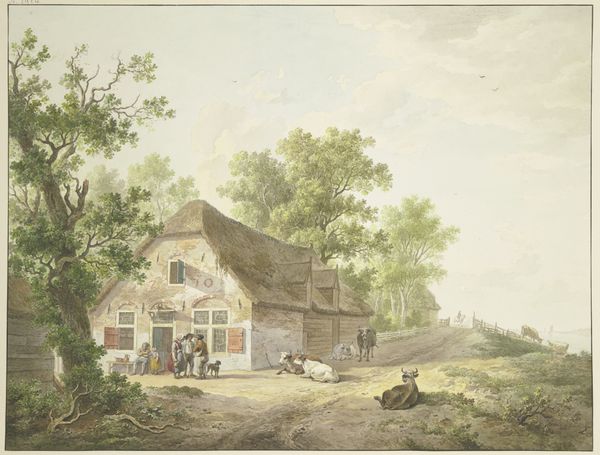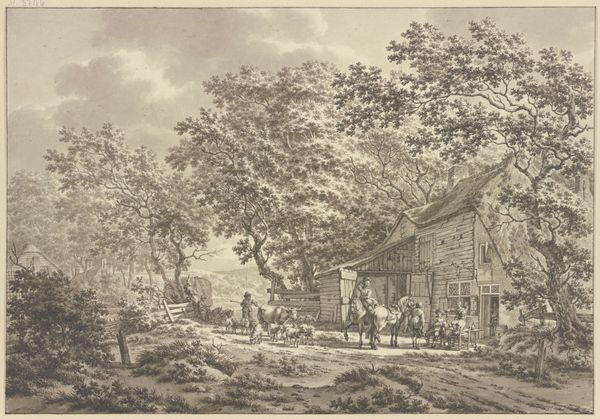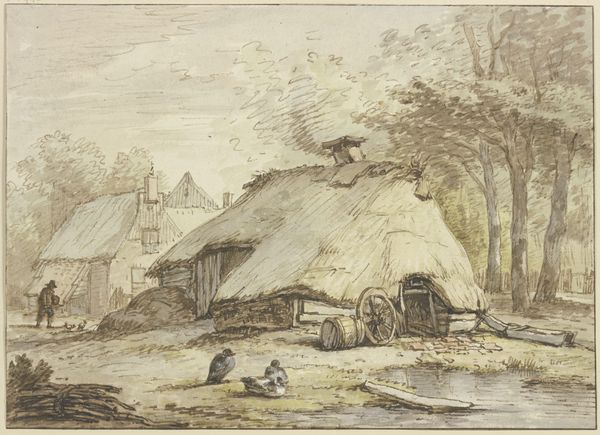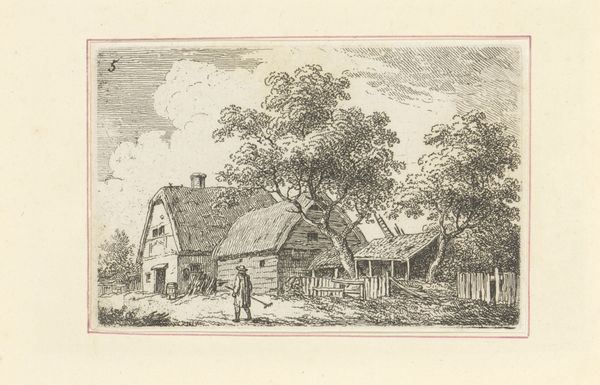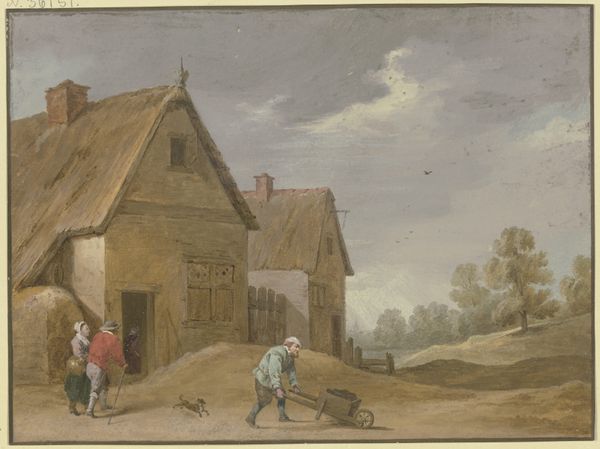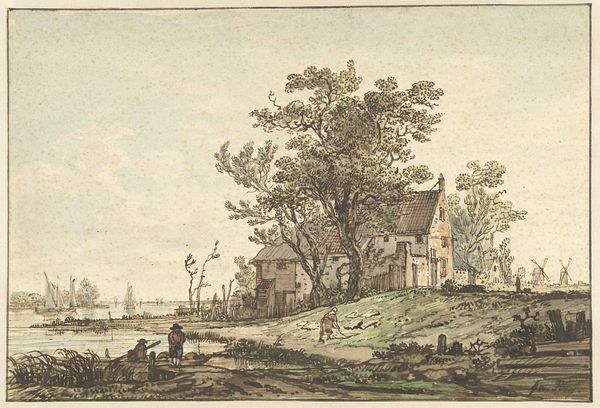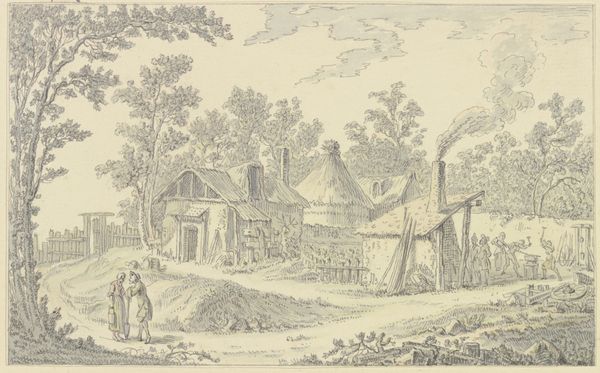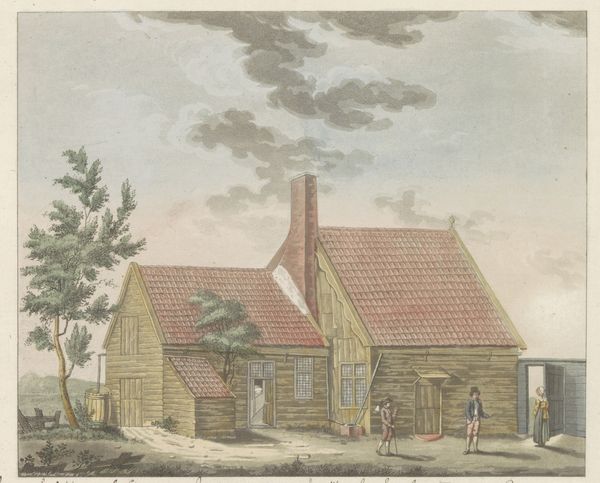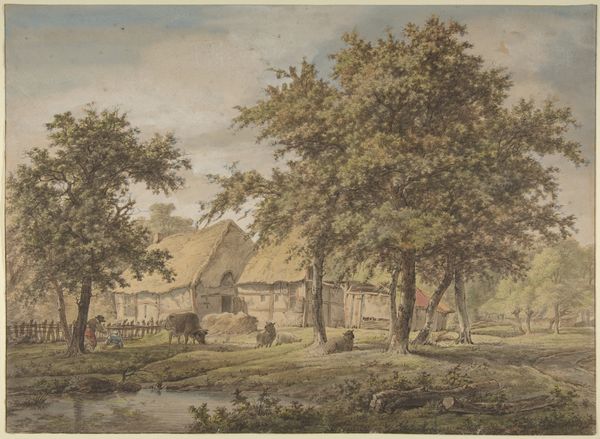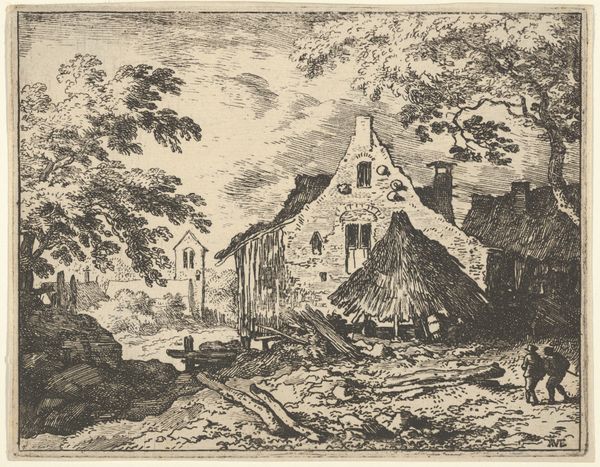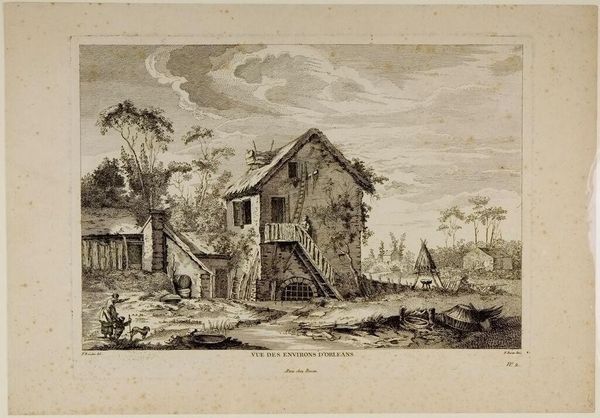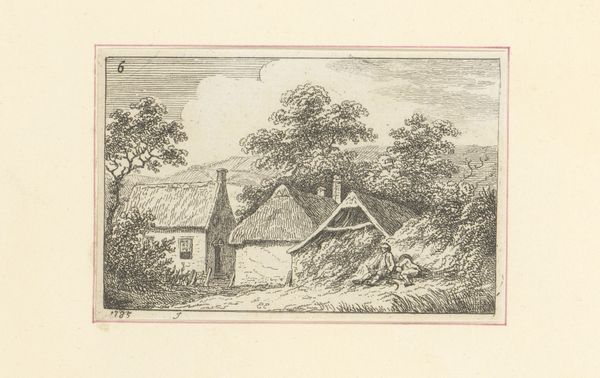
Dimensions: height 196 mm, width 323 mm
Copyright: Rijks Museum: Open Domain
Curator: This etching by Hendrik Kobell, titled "Boerderij aan een rivier" or "Farm by a River", produced around 1768, offers a pastoral scene with a farmhouse dominating the foreground. The piece masterfully employs etching and engraving to depict depth and texture. What are your first impressions? Editor: My initial feeling is a sense of tranquility. The composition leads the eye gently from the farm buildings toward the distant sailboats, but the subtle details of the rustic structures really give a grounding sense to the etching. There's a delicate balance between the domestic and the expansive. Curator: Indeed. Note the linear precision of the etching technique used to define the architecture, contrasting with the more fluid engraving which evokes natural textures within the landscape. Semiotically, the farm represents settled society, whereas the river suggests mobility and trade enabled through seafaring. Editor: It’s interesting how the social and economic climate of the Dutch Golden Age fostered an interest in genre scenes. How were works such as these circulated among Dutch society? Were these seen as accessible images, available to the growing middle classes? Curator: Prints such as these played a crucial role in disseminating visual information and promoting a national identity. It also reflected, perhaps, the complex relationship between the Dutch and water; their reliance on the waterways and the inherent risks it represented. Consider too the position of such works within the art market. Editor: Given that etching and engraving facilitated relatively inexpensive reproduction, I imagine these works occupied a fascinating niche, democratizing access to imagery while still reflecting the socio-political underpinnings of their time. There’s an incredible tension present: accessibility versus representation of wealth. Curator: Exactly. It is fascinating how Kobell negotiates these tensions, and demonstrates through his subtle manipulation of material, texture, and composition, an art which is very telling of Dutch society at the time. Editor: Looking closely and discussing with you makes one appreciate the intricate network of historical factors imbedded within even the simplest image. Curator: Precisely. These formal choices do so much more than meet the eye!
Comments
No comments
Be the first to comment and join the conversation on the ultimate creative platform.
